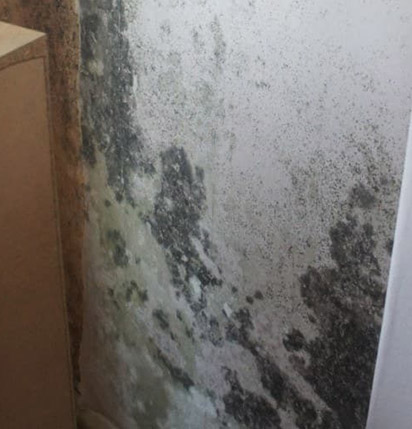
Mould is everywhere, as you’ve noticed if you’ve ever left out a loaf of bread too long. Give mould the right conditions and a source of food and moisture, and it can grow on almost anything.
There are hundreds of thousands of different species of mould, most of which are harmless to us, and many are used in the production of food, drink and medicine.
But there’s one type of mould you never want to see in your home: black mould.
Why is black mould growing in my home?
What makes black mould such a nightmare for homeowners is that it eats the cellulose found in wood, carpets, curtains, paint and plaster.
Simply add a bit of moisture into the air, and the average home is full of opportunities for black mould to grow.
This means that black mould isn’t something you can spray, wipe off and forget about. The mould is always present, so you have to deprive it of moisture if you want to stop it from slowly eating away at your home and belongings.
No matter how many times you wipe it off or paint over it, if you don’t address the cause of damp or ventilate your home to get rid of moist air, black mould will come back time and time again.
Why is black mould in London so common?
Many of London’s homes are Victorian or even older. Period homes were built without active ventilation and relied on air simply passing through vents, windows or other openings.
They also weren’t built with our current lifestyles in mind. Showers, baths, cooking, drying clothes and simply being indoors so much adds far more moisture to the air than periods homes were built to take.
Add to this heavy-handed insulation works that have blocked off natural airflow in many period homes, and you have the perfect conditions for black mould to grow.
How can I get rid of black mould?
If you’ve spotted black mould in a room, it means that moisture has collected on the surface where mould is growing.
It could be caused by condensation gathering on a cold surface (common on windowsills) or moisture soaking directly into the material from a leak or structural damp.
You should hope that the cause is condensation, because it’s the easiest to fix. Simply installing an extractor fan in trouble areas or a PIV unit to improve ventilation throughout the house will gradually deprive the mould of the moisture it needs to survive.
Sometimes, the cold surface that the moisture is collecting on is caused by a “cold bridge” – where cold from the outside travels inside through conductive materials.
In this case, improving ventilation may not be enough to stop condensation, and you will need structural works to fix the cold bridge.
Leaks can be more trouble, depending on what’s causing them and how long its been active for. A clogged exterior drain can simply be unblocked, but we might have to dig inside your wall to fix a leaky pipe.
If the leak has been undetected for too long, the building materials around it may be too damaged to save and will require replacing.
Finally, structural damp can require the most work to fix, depending on the cause. Damp can get into a home through cracks or decayed pointing in exterior walls or up through the ground, also known as rising damp.
To fix structural damp, we might have to simply fill in a crack in a wall, or completely replace a damp proof course.
Accurate diagnosis of the cause of the damp is essential, as many types of damp look similar to a layperson or a damp company trying to overcharge you for a simple fix.
Is black mould bad for my health?
According to the NHS, “…if you have damp and mould you’re more likely to have respiratory problems, respiratory infections, allergies or asthma. Damp and mould can also affect the immune system.”
Touching black mould or inhaling spores can trigger allergic reactions, ranging from itchy skin, irritated breathing, sore eyes and even rashes.
Long term exposure to black mould or the damp conditions in which it grows is especially dangerous for the very young, old or people with weak immune systems.





